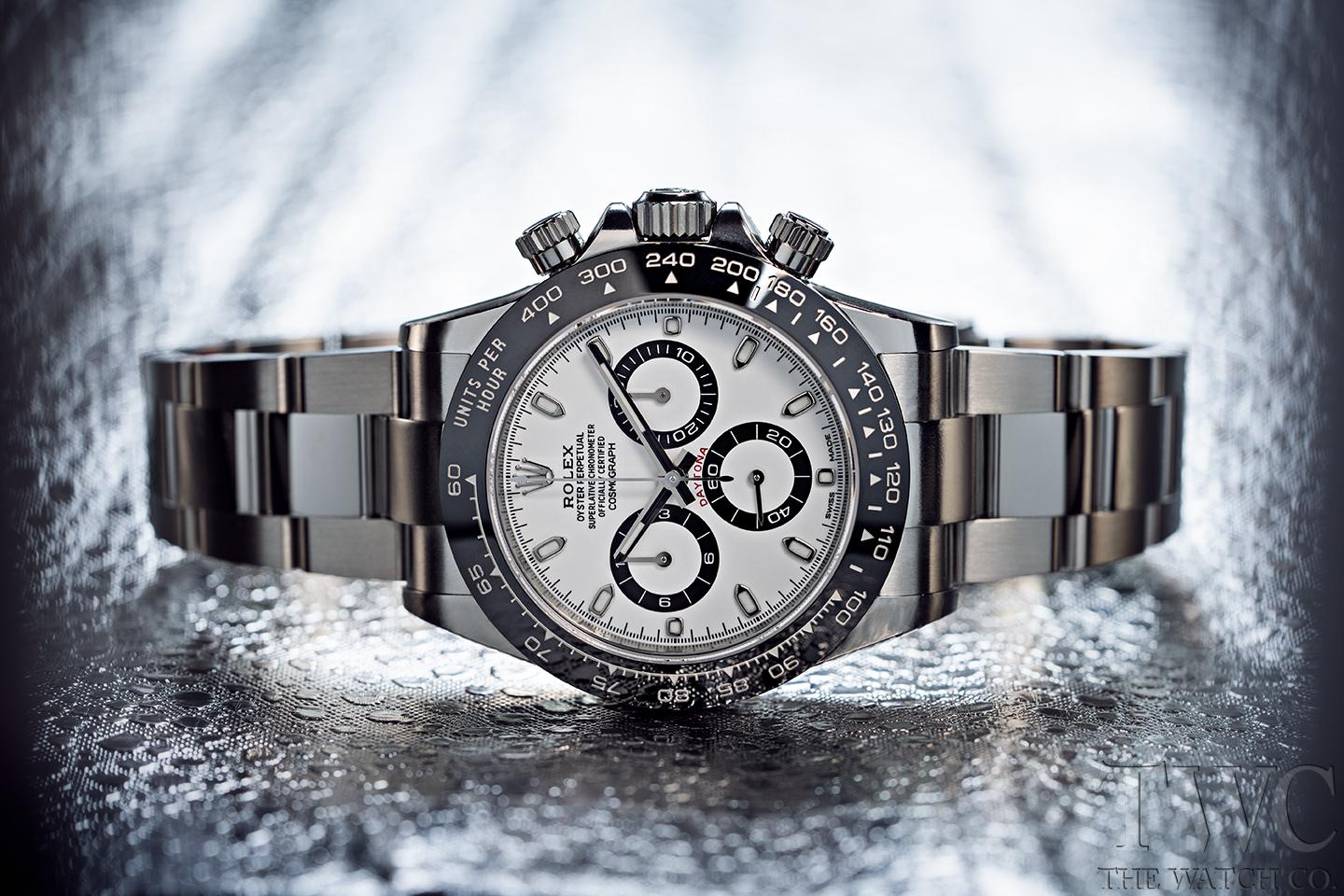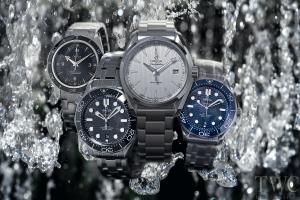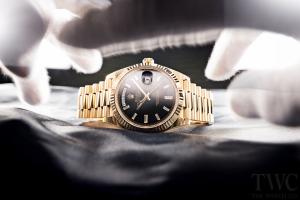Behind The Scenes: Where Rolex Watches Are Made

Rolex watches are the number one preferred luxury wristwatch brand in the world. However, it is not a watch for every Tom, Dick, and Harry. Owning a Rolex is a symbol of success. No doubt, the brand has come a long way and has remained strong throughout all these years. Now, for a brand to be that strong, it must be doing something right. In other words, it can only mean that the brand delivers on what it says it will.
Today, the brand name of Rolex has become a legend of sorts. Have you ever wondered how a single Rolex is made? To satisfy your curiosity, we’re here to run you through the process from start to finish. We’ll discuss where and how Rolex watches are made and take you through a simple tour of the four manufacturing facilities of Rolex in Switzerland. Now, before we move forward to talk about these, let us correct any wrong opinions you might have.
First, understand that a real Rolex timepiece is not made in China. If you find any Rolex box that states it’s made in China, you should know that it is not an original. All Rolex wristwatches are made in Switzerland. With this factoid cleared, let us explore the facilities where the most expensive Rolex watches are being produced.
Bienne – The Home of Rolex Movements

One feature that makes any Rolex watch sought after is its impressive calibre. One of the company’s suppliers, the Aegler company of Bienne, provided Rolex its precise movements when it first started. This continued until Rolex bought the company in 2004. In 2004, the Borel family sold off the company to Rolex Geneva for more than 1 billion CHF.
The facility is spread over 92,000 square meters, and it contains some of the most priced pieces of Rolex. Before we go ahead with the tour, we need to highlight some important points again. First, Rolex produces each of its calibres in-house. Additionally, each of the movements is assembled by hand. This does not imply that the company designs all parts of the wristwatch by hand. Most noteworthy is that Rolex uses state-of-the-art machinery to couple its components. But, as mentioned, they fix the movements together by hand.
Also, we need to mention here that Rolex doesn’t allow visitors into the Bienne facility. This is for obvious reasons. The company has built an exceptional manufacturing system and machines to manufacture exclusive components for Rolex. Of course, they wouldn’t want anyone to view their trade secret. The brand has the best of steel, copper, and brass. And they craft all these with proprietary equipment that you can’t find anywhere else. Thus, it is little wonder that Rolex is as expensive as it is. Furthermore, the facility also produces the exclusive components of Rolex that you can’t find on another watch. These components include the Paraflex shock absorber and the Parachrom balance spring.
First of all, let’s talk about calibres. When talking about calibres, the high-end Rolex productions are Yacht Master, Daytona, and Sky Dweller. It will shock you to know that there are more than 120 people working on only these three Rolex watches.
Plan-Les-Ouates – The Central Laboratory of the Watchmaker
This is the central laboratory of Rolex. In fact, it is the destination where the inborn creativity of Rolex takes full shape. The laboratory comes with robotic inventory machines, iris scanners, and a private gold foundry. It is important to mention that Rolex built its Plan-Les-Ouates facility in 2006. What’s even more impressive is the fact that this is the biggest of all the facilities of Rolex. It features six wings that are about 30 meters high, 30 meters wide, and 65 meters long.
Also, there is a central axis that links all the different wings together. When you see a Rolex Air King, always think of the exceptional work they have done on it at the Plans-les-Ouates. This facility is eleven stories high but you can only see five of them if you are looking at it from the outside. The remaining six of the stories are underground and hidden from prying eyes. No doubt, this location is the center of the competitive edge of Rolex.
Rolex Private FoundryAnother fascinating part of this facility is the private foundry. This is the facility where the company develops its personal formula for three types of gold. It is also the location where it manufactures its own 904L stainless steel. Furthermore, you should know that Rolex crafts each of the alloys that it uses for its watches from scratch in-house. The reason for this is because the configuration of the metal is the most important factor. It determines the mechanical, dimensional, and aesthetic properties of the watch.
In addition, the company has invested in a central laboratory where world-class experts are employed. These seasoned experts work on the materials and the tribology of the design. This includes the science of lubrication, wear, and friction. Also, Rolex has a machine that opens and closes the Oyster bracelet clasp in this laboratory. This machine repeats this action about 1,000 times within minutes. In addition to the impressive machine in the laboratory, Rolex has also invested in the people who work at this facility. These are top-rated scientists who are not from the watch business. There is also the ceramic department of Rolex which is an industry-leading unit.
Les Acacias – The International Headquarters of Rolex

Source: Mamic 1970
This is the facility that many people know as the center of Rolex manufacturing. This is because it serves as the international headquarters of the company. Also, it is the office of the entire senior executives and the heritage department of Rolex. In fact, if there is any facility that the company guards with all discretion and privacy — Les Acacias is the place.
The Les Acacias facility is the final stage of the production line of Rolex watches for men and women. As a matter of fact, it is the hub of all Rolex activities. The facility is home to all the design, development, research, marketing, and communications of the company. Furthermore, the headquarters consists of two different ten-floor production sections. Now, this is the only facility that has a façade in Rolex’s trademark color — green.
In relation to manufacturing, the Les Acacias is the final assembly plant for all Rolex watches. Also, it features many stages of the final quality control for the brand. This is where they fix the hands and dials into the Rolex watches. Additionally, movements, serial numbers, and every tiny detail of the watch development are being carried out here. More importantly, each of the groups in this final assembly facility is independent. They work in about two to three months shifts. This final assembly completes the production of a Rolex timepiece.
At this stage, a Rolex watch has taken shape. Although it is the final assembly, they don’t take watches from here straight to the shelves. From this stage, they send the watches to the final control stage. This is where they take the pieces through a rigorous test. The level of tests they take these Rolex watches through will amaze you. Whether it is a gold Rolex or a diamond Rolex, they all go through the same rigorous test. Interestingly, even the Rolex Oyster Perpetual, which is the entry-level of Rolex watches goes through the same rigorous testing as expensive watches. This means there isn’t one Rolex watch that doesn’t go through the meticulous test at the control stage.
Suffice to mention that it is not only the movement and cases that go through the final control stage. The complete watch goes through this process. Now, you might ask, what do they test in the watch? Well, the core focus of the tests centers on the three goals of the watchmaker. The test checks the self-winding, waterproofness, and precision of the watch. For the Oyster test, they submerge each watch into real-life water scenarios.
Also, they use a simulated environment like pressurized tanks that guarantees the level of depth for each model. Moreover, they include an extra 10% margin in depth. For the dive wristwatches, they test them with an extra 25% margin with a specialized machine. It is crucial to mention that COMEX designed the specialized machine. It is also important to mention that less than 0.1% of the watches they test reveal any issue. This explains the depth of work that has gone into the production of a single Rolex wristwatch.
Chêne-Bourg – The Home of Rolex Dial and Gem Setting
Rolex Chêne-Bourg is the destination for the production of dial and gem setting. This facility is located in the northeast of Plan-Les-Ouates. It is amazing to know that Rolex produces every component of its watch in-house. This is one of the major reasons why the brand has remained formidable for years. The company produces its dial at Chêne-Bourg. Additionally, they print and set it with indexes as well as other components.
The facility is a ten-story building, with five hidden underground. Note that they produce the dial in the underground part of the facility. But they do the gem setting and numeral application in bright-lit white rooms with sunlight aboveground. There are about a hundred people that work on the dial setting at every specific time. In total, the facility houses about 800 people working on dials and gem setting on Rolex watches.
Let us mention here that the company produces its dial markers with solid gold and the dials with brass. Additionally, there are more than 60 operations that work on a dial until it gets to its completion stage. Now, the high quality of the setting and gemstone that Rolex uses is exceptional. The attention to detail on all the dials is unbelievable. Let us point out that Rolex only uses flawless gemstones. This is a major reason why the company doesn’t produce many watches with stones and diamonds. You will find only a few diamond Rolex watches in the world.
Another intriguing thing about the Chêne-Bourg facility is the presence of a specialized machine. This machine filters stones that the company receives. The job of the machine is to discover any fake stones and diamonds in the supply. This is to guide against any inferior material for the production of its watches. Of course, you may wonder how often they discover fake stones from the lots they receive on a regular basis. According to Rolex, they see only one out of ten million stones. Yet, they keep checking the stones day in and day out. No doubt, this is what makes Rolex what it is today.
Rolex Finishing
Yes, you heard right. Rolex definitely has a finishing unit in its facility. This might sound outrageous but the company finishes each of its watches to perfection. Here, the company holds each of its cases against a polished wheel for perfect finishing. Essentially, humans do this job. At each point, there are about fifty to sixty people who polish the cases. It is quite interesting that Rolex assembles its Jubilee and Oyster bracelets by hand, using some well-designed guide templates. These are also designed in-house.
Conclusion
A Rolex is, no doubt, a masterpiece. A lot has gone into the production and craft of the watches. And only the best brand could have done that. If you have ever thought that a Rolex watch is expensive, the production and facilities details highlighted above should convince you of its worth. It is little wonder that Rolex is the leading wristwatch brand in the world. The attention to detail on each of the watches is unbelievable.
There have been different stories about where Rolex watches are made. The truth is that there is no other place where they produce original Rolex but Switzerland. Any Rolex that has another country of origin is no doubt a fake. Therefore, you should check the origin of the Rolex you want to buy before you pay for it. Make your investment a worthy one!



